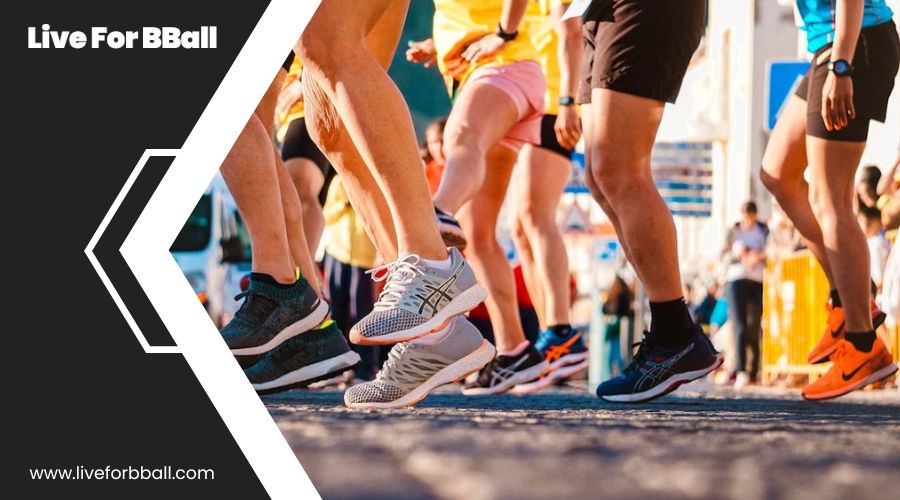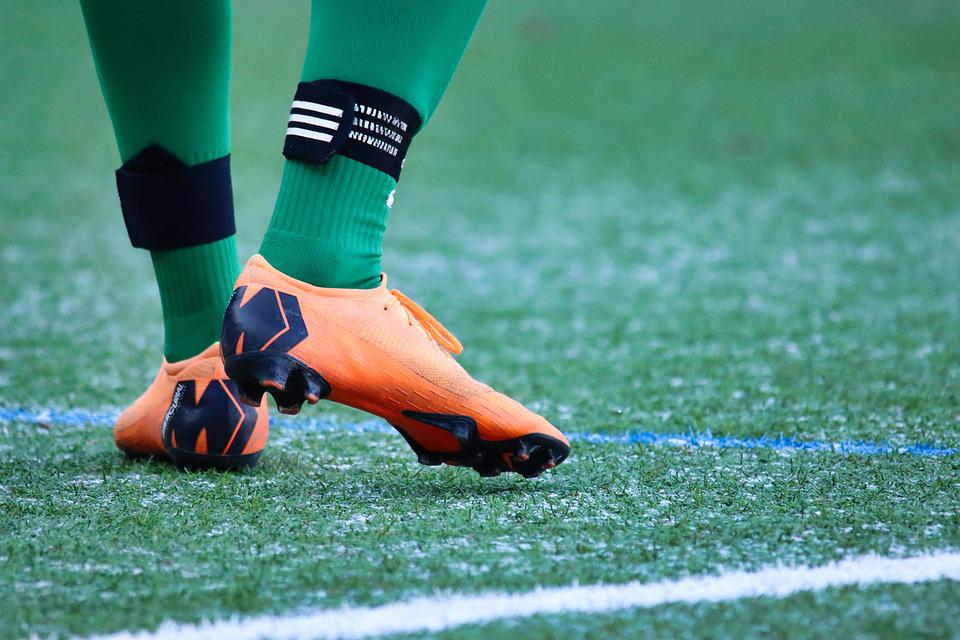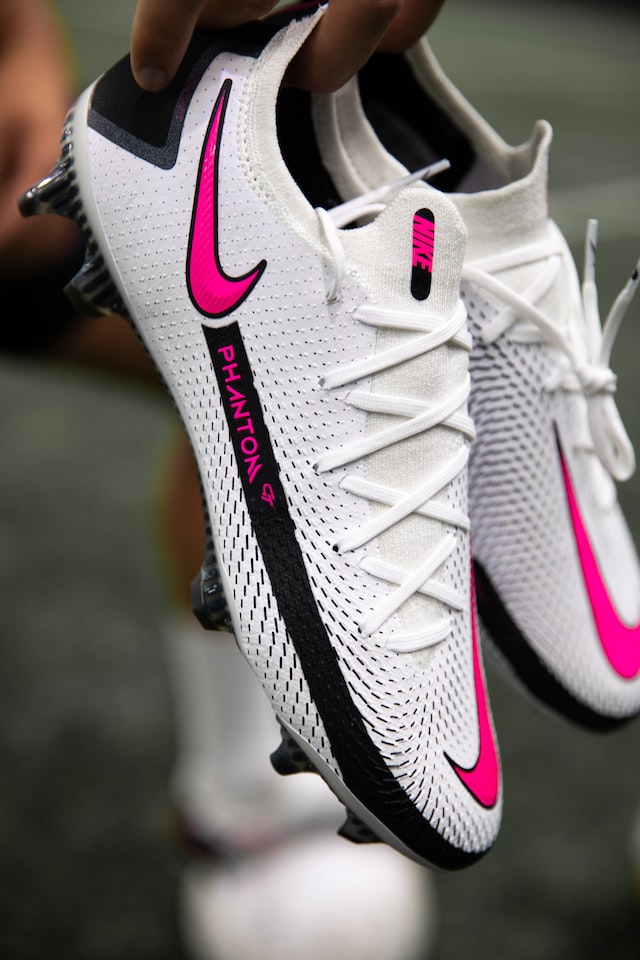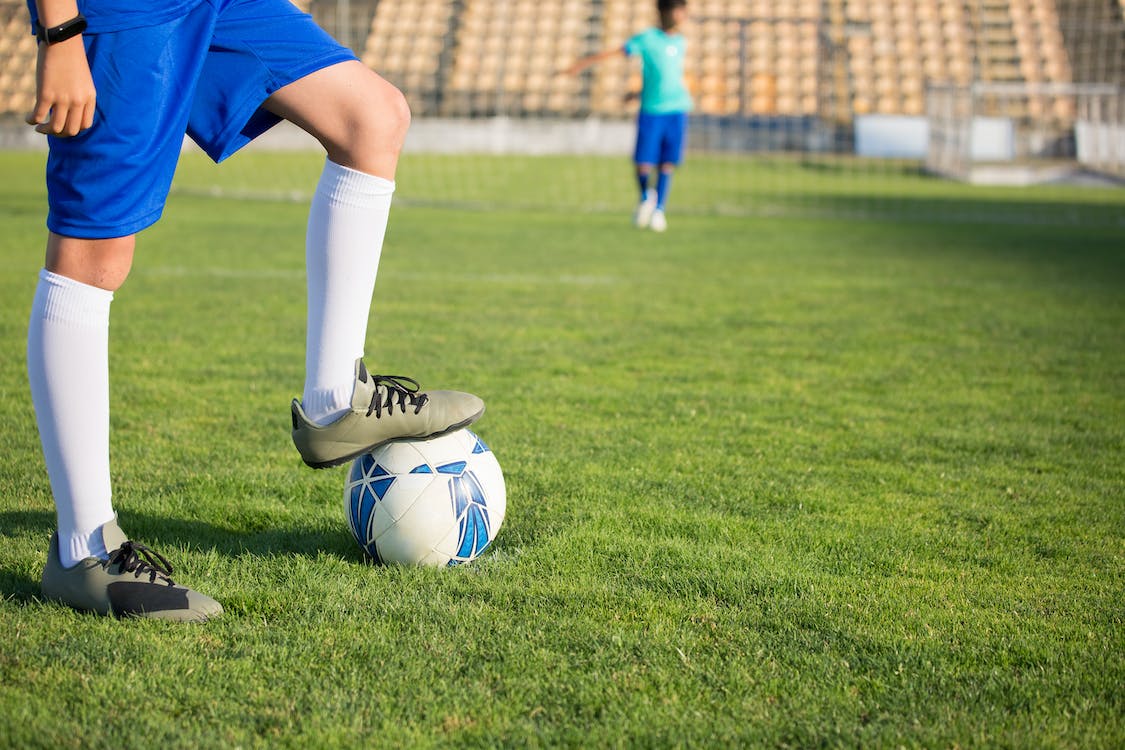Guide to Selecting Soccer Shoes
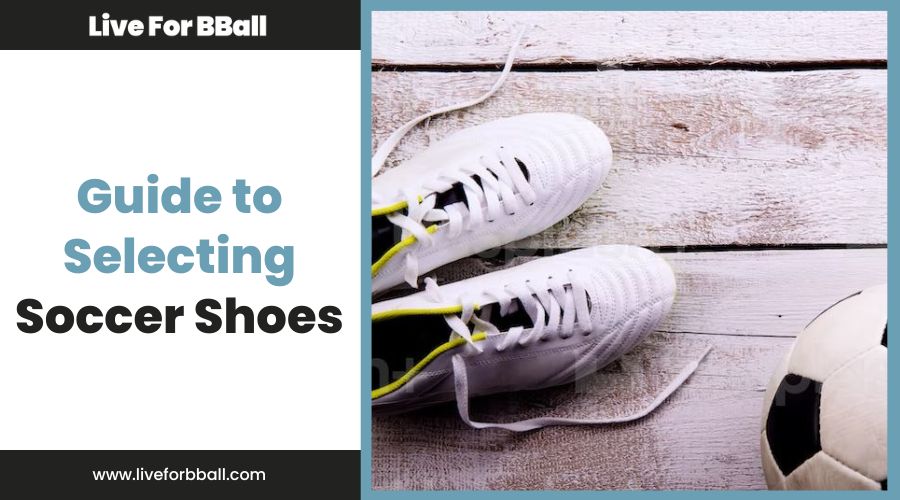
Soccer or football is considered to be one of the most popular sports in the world, and if you watch a game of the FIFA World Cup on your television or live in a stadium, then you will definitely see how many fans of the sport there are around the world. Because of the massive popularity of soccer, there are many kids, teens, and adults that are inspired to play the sport. In order to play the sport properly, they would need to have a pair of soccer shoes, also known as football boots or soccer cleats.
Soccer shoes are very different from sneakers or regular shoes that you wear for work, school, traveling, or running errands. The main difference between soccer shoes and regular shoes is found in the outsole, as the soccer shoes would have spikes that can help the player have better footing and stability on the football field. If you are going to buy soccer shoes, here is a guide to selecting the best pair.
What are Soccer Shoes?

Soccer shoes are footwear that is specifically worn by players of association football, which is the sport wherein players would need to move the ball using their feet. Association football shouldn’t be confused with American football because they are entirely different sports, as American football requires players to hold the ball using their arms while association football doesn’t allow it.
The soccer field, also called the football pitch, has a playing surface that is primarily made of natural turf or artificial turf. The natural turf is the upper layer of the soil where grass grows. [1] On the other hand, artificial turf is a synthetic layer placed above the natural soil, and this synthetic layer would also have synthetic fibers that look like grass. However, most amateur and casual players would only get the chance to play football on dirt fields that don’t have grass and could sometimes be very muddy.
In order for the players to play football properly on natural turf, artificial turf, and dirt fields, they would need to wear a pair of soccer cleats that can help them move better on the field. The spikes or studs at the bottom of each pair of soccer shoes can provide grip to the player’s feet, as the studs can pierce through the turf or soil. Besides soccer, there are also other sports that have players wearing football cleats, and these sports include rugby league, rugby union, hurling, quad ball, and Lacrosse.
The Different Parts of Soccer Shoes
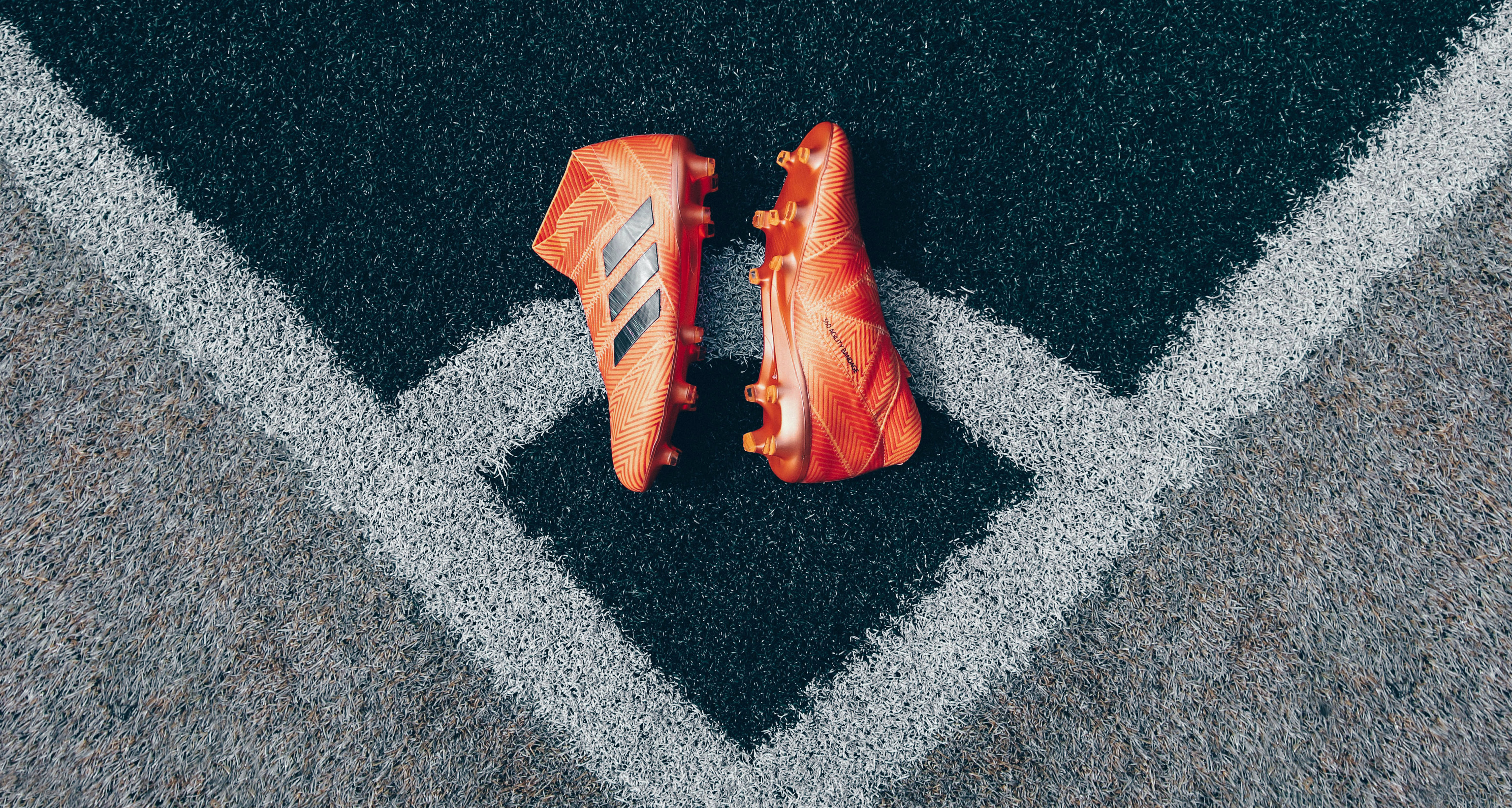
To have a better decision when it comes to buying soccer shoes, you would need to know about the different parts of each pair so that you will have an idea of what to look for. Here are some details about the different parts of soccer shoes.
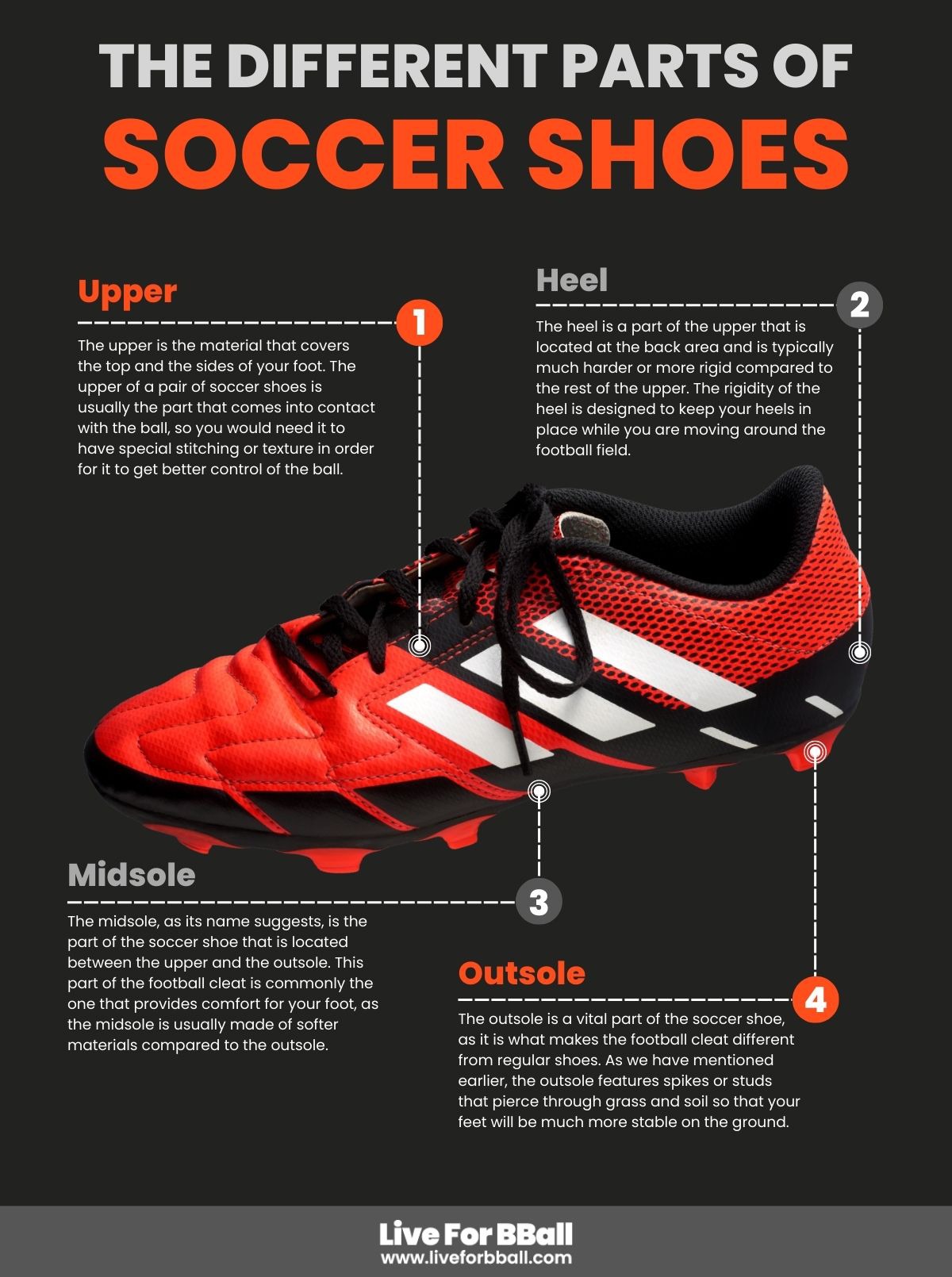
Upper
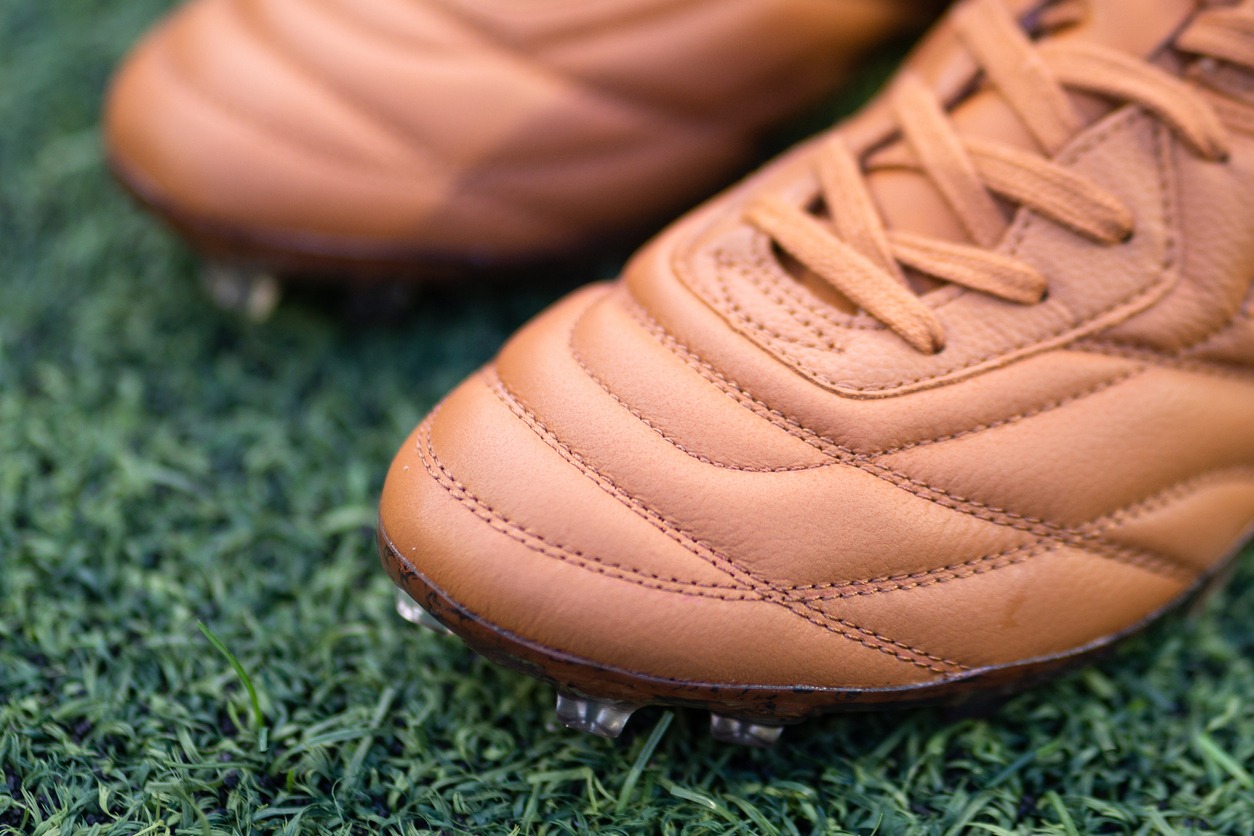
The upper is the material that covers the top and the sides of your foot. The upper of a pair of soccer shoes is usually the part that comes into contact with the ball, so you would need it to have special stitching or texture in order for it to get better control of the ball.
Soccer shoes that have a leather upper would usually have webbed stitching, and this is believed to be helpful in handling the ball. Meanwhile, soccer shoes that have a synthetic upper would have textures on different areas that can help not only in handling but also in passing and scoring. The upper of soccer shoes are also available in different lengths, like low tops that only covers your feet up to the bottom of the ankle, mid tops that covers the upper part of the ankle, and high tops that cover more sections of your ankle and lower leg.
Heel
The heel is a part of the upper that is located at the back area and is typically much harder or more rigid compared to the rest of the upper. The rigidity of the heel is designed to keep your heels in place while you are moving around the football field. [2] In addition, the heel would also protect the bones and muscles of your heels from injuries.
Midsole
The midsole, as its name suggests, is the part of the soccer shoe that is located between the upper and the outsole. This part of the football cleat is commonly the one that provides comfort for your foot, as the midsole is usually made of softer materials compared to the outsole. The midsole of the soccer shoe isn’t actually visible, as it is a drop-in midsole, which means that it is placed inside the shoe. Basically, the midsole of the soccer shoe also serves as the insole.
Outsole
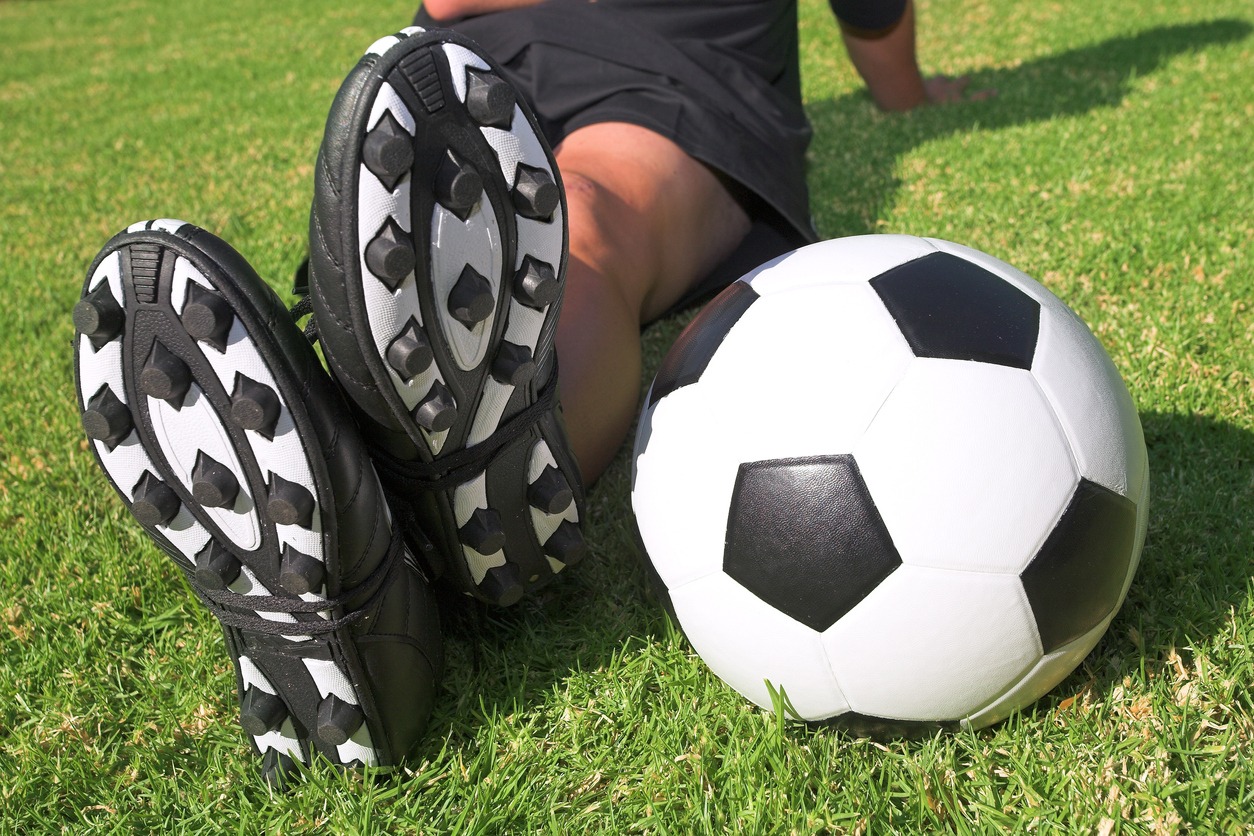
The outsole is a vital part of the soccer shoe, as it is what makes the football cleat different from regular shoes. As we have mentioned earlier, the outsole features spikes or studs that pierce through grass and soil so that your feet will be much more stable on the ground. [2] In addition to the studs, the outsole would also have a plate above the studs that serves as a support for the foot so that it wouldn’t bend too much and cause injuries.
Best Outsoles for Different Surfaces
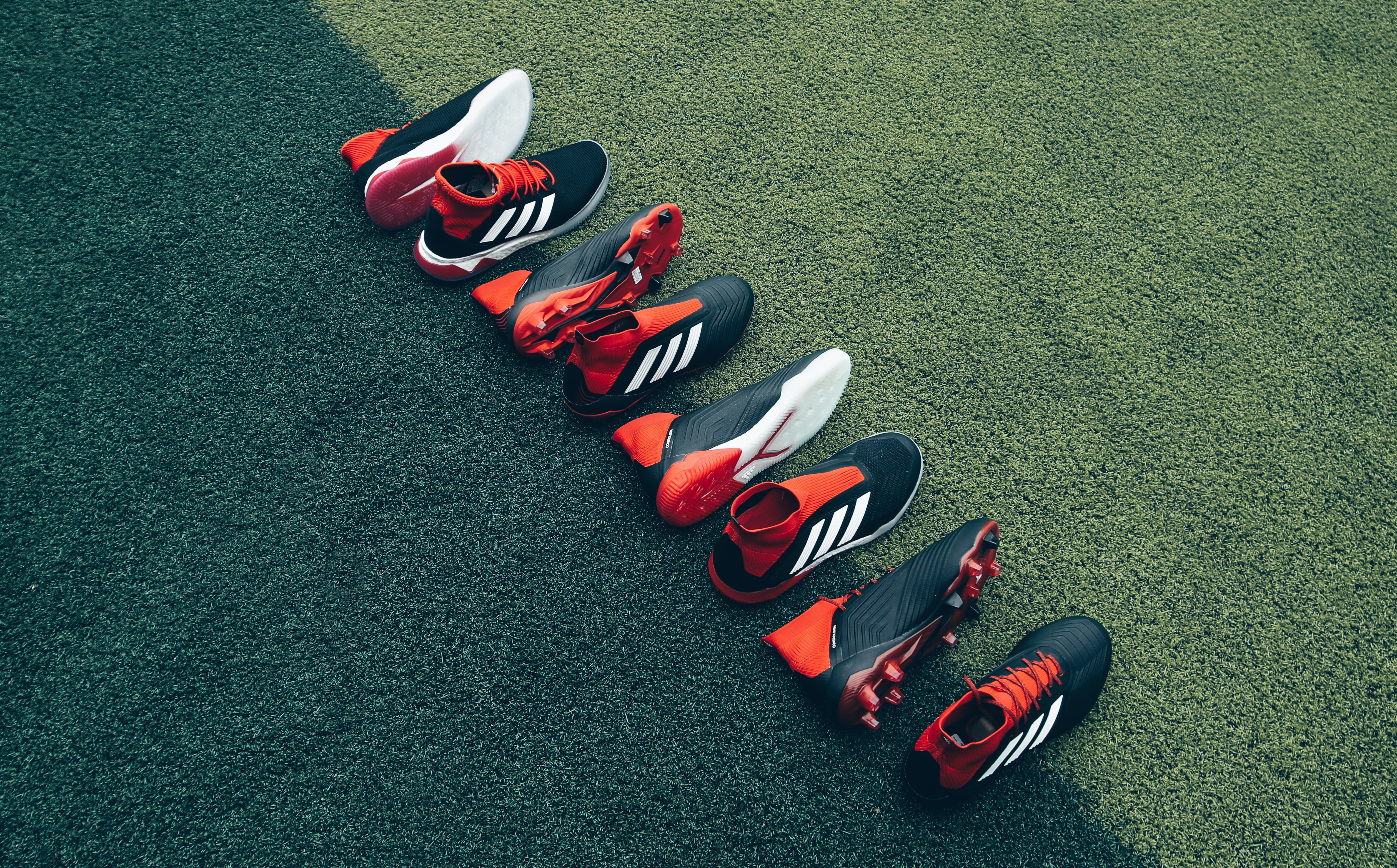
There are different types of outsoles and studs that you should know about when buying soccer shoes. For this segment, we will talk about the various types of outsoles, and each of these types is made for different kinds of surfaces. Here are some pieces of information about these types.
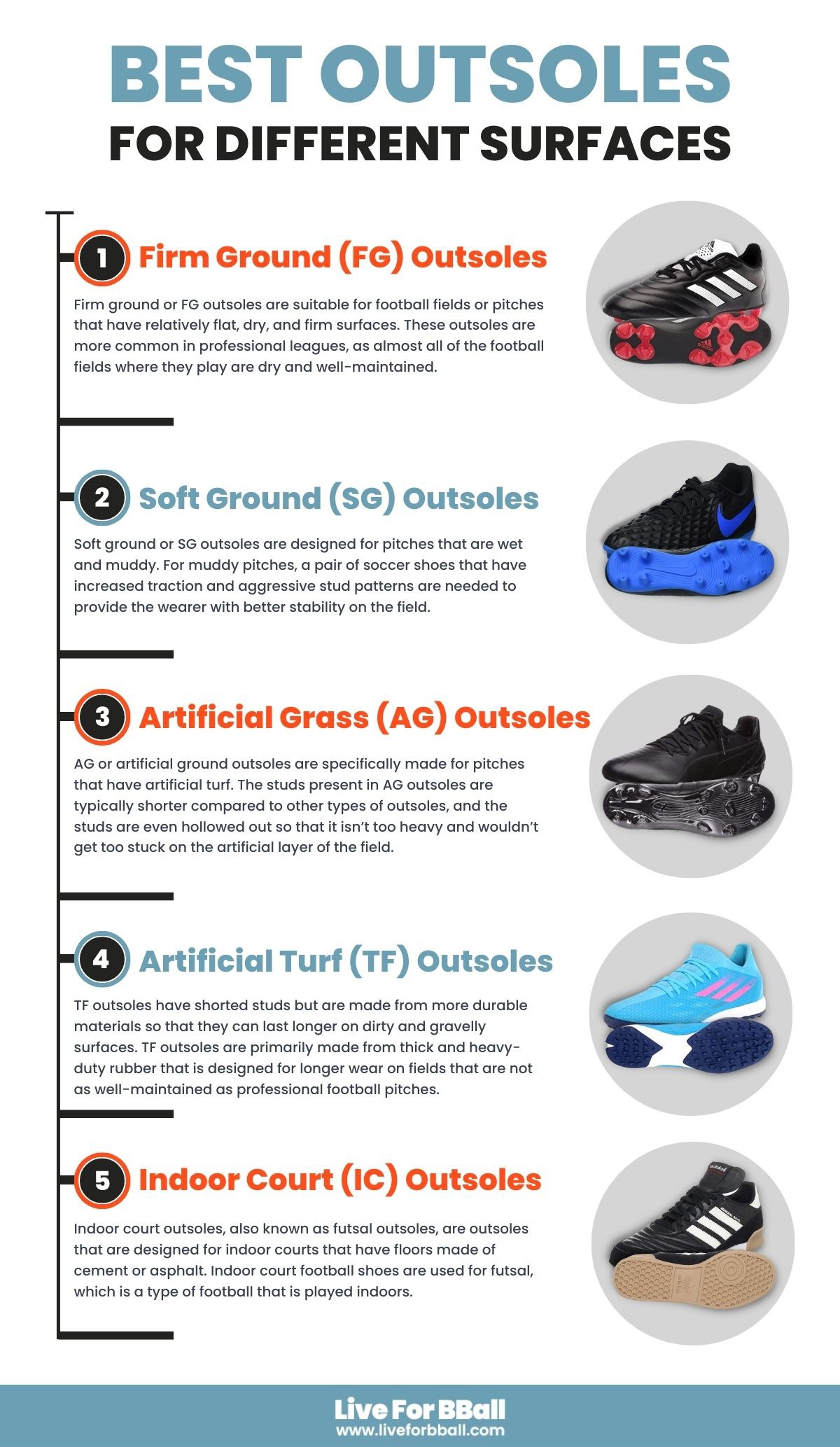
Firm Ground (FG) Outsoles
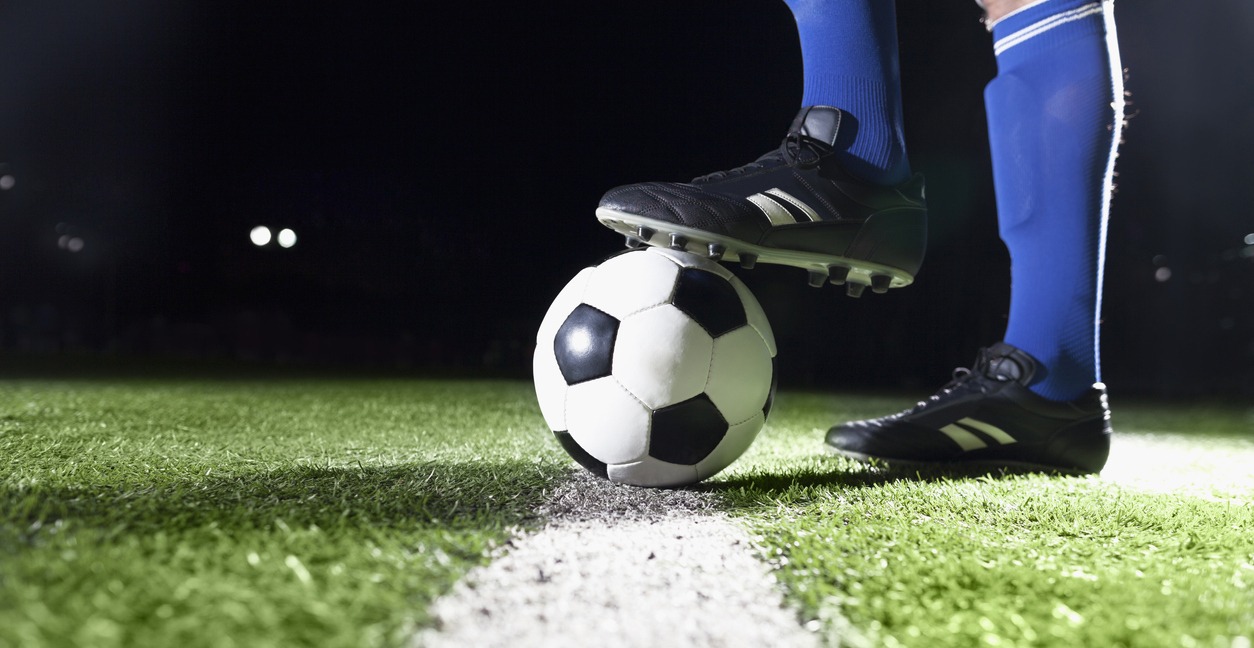
Firm ground or FG outsoles are suitable for football fields or pitches that have relatively flat, dry, and firm surfaces. These outsoles are more common in professional leagues, as almost all of the football fields where they play are dry and well-maintained. [3] Here are two good soccer shoes that have firm ground outsoles.
- Nike Phantom Venom Club – these firm ground soccer cleats have an asymmetrical lacing system that allows the wearer to have a larger striking area on the upper. In addition, the soft synthetic material on the upper provide great flexibility for the feet.
- Adidas Goletto VIII – this pair of soccer shoes has an upper made of synthetic leather, which offers sufficient protection for the feet. The upper is also fairly lightweight, so your feet will feel lighter and faster while on the field.
Soft Ground (SG) Outsoles

Soft ground or SG outsoles are designed for pitches that are wet and muddy. For muddy pitches, a pair of soccer shoes that have increased traction and aggressive stud patterns are needed to provide the wearer with better stability on the field. Check these two football cleats for reference on the features and details of SG shoes.
- ASICS Lethal Tigreor 4 ST – these football cleats have a soft leather upper that is flexible but is rigid enough to prevent your feet from flexing too much. These shoes also have a stud configuration that is perfect for maneuvering freely on softer surfaces.
- Nike Tiempo Legend 8 Elite – this pair of soccer shoes feature diamond patterns on the upper for better ball control. It also has a quad-fit mesh lining that hugs your foot and keeps it in place.
Artificial Grass (AG) Outsoles
AG or artificial ground outsoles are specifically made for pitches that have artificial turf. The studs present in AG outsoles are typically shorter compared to other types of outsoles, and the studs are even hollowed out so that it isn’t too heavy and wouldn’t get too stuck on the artificial layer of the field. Here are two football cleats with AG outsoles.
- Puma King Platinum – the King Platinum by Puma is the one of the most lightweight football shoes for artificial grass. This pair of soccer shoes has a simple and streamlined design to make them feel lighter and faster on the feet.
- Puma Future Z – another great AG soccer shoe from Puma is the Future Z, which is also quite versatile since it can also be used for firm ground fields. These shoes have the FUZIONFIT system that wraps around the wearer’s feet to provide support and barefoot-like flexibility.
Artificial Turf (TF) Outsoles
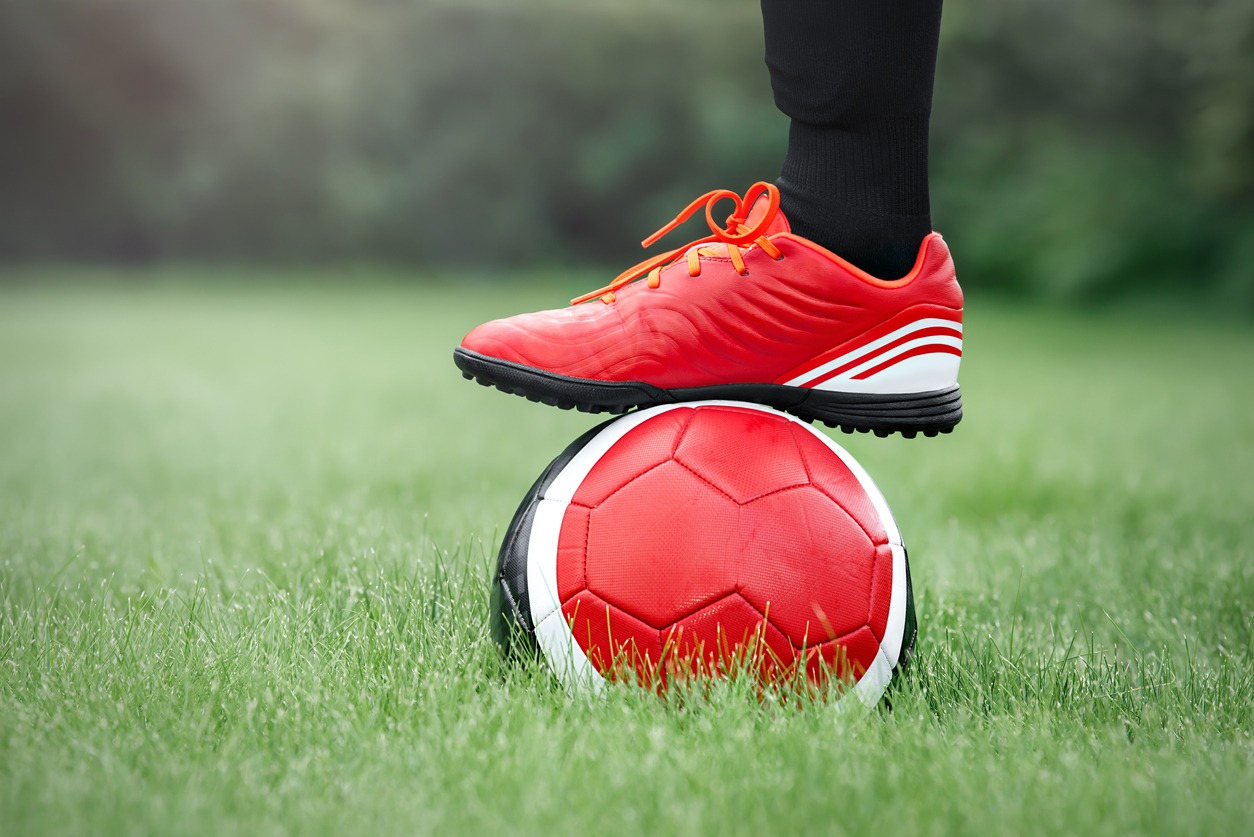
TF outsoles have shorted studs but are made from more durable materials so that they can last longer on dirty and gravelly surfaces. TF outsoles are primarily made from thick and heavy-duty rubber that is designed for longer wear on fields that are not as well-maintained as professional football pitches. [3] Check these two great soccer shoes for artificial turf.
- Adidas Speedflow.3 – the Speedflow.3 by Adidas has the Speedskin upper that is made from semi-translucent materials that are lightweight but still provides enough support and rigidity for the feet.
- Adidas X GHOSTED.3 – one of the most popular TF shoes on the market is the Adidas X GHOSTED.3, which features an asymmetrical lacing system for a wider striking area.
Indoor Court (IC) Outsoles
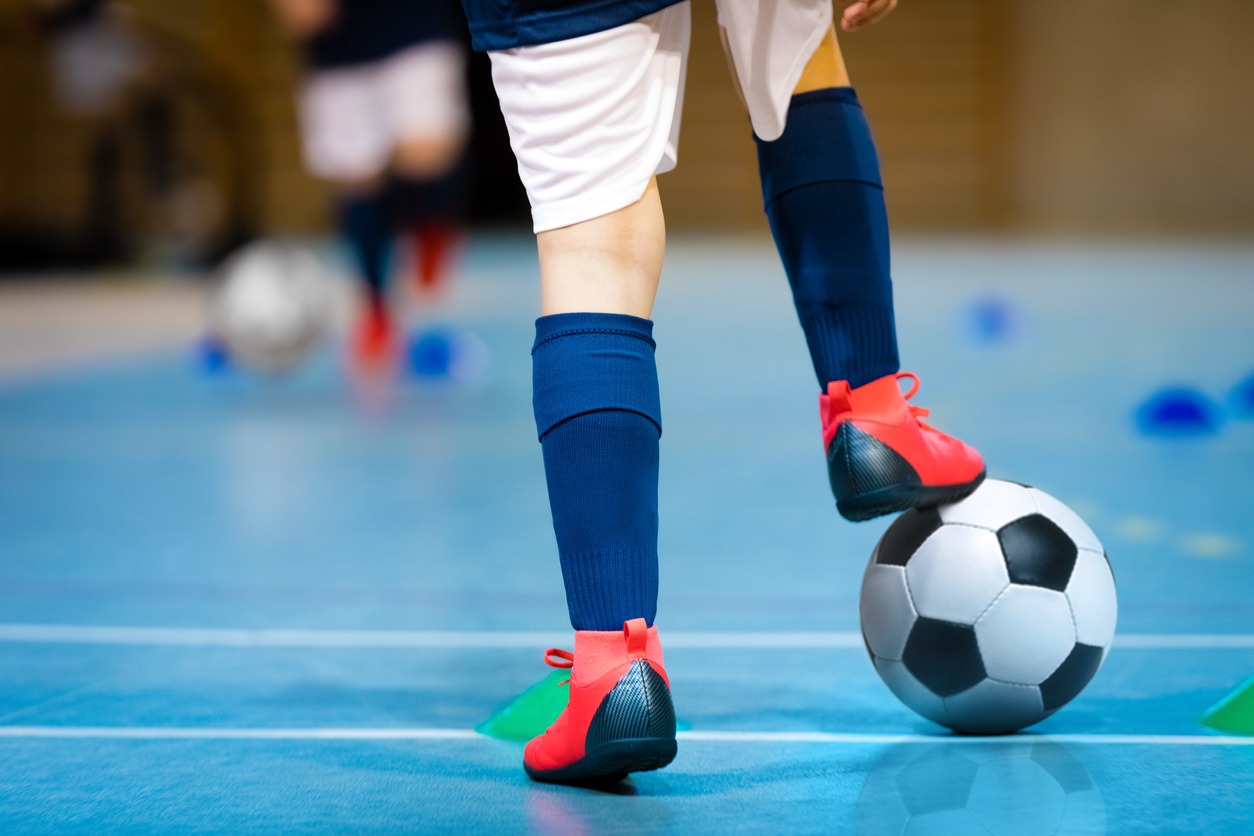
Indoor court outsoles, also known as futsal outsoles, are outsoles that are designed for indoor courts that have floors made of cement or asphalt. Indoor court football shoes are used for futsal, which is a type of football that is played indoors. Futsal shoes typically have the same uppers as outdoor soccer shoes, but their outsoles resemble the ones found on running shoes, as they don’t have studs and only have a flat traction pattern. Here are two of the best soccer shoes for indoor courts.
- Adidas Mundial Team – a classic soccer shoe for indoor courts is the Adidas Mundial Team, which is made from soft leather that is responsive and durable. The outsole of the Mundial Team is grippy, so it is sure that you won’t slip on indoor court.
- Diadora Capitano ID – a simple but effective pair of soccer shoes for indoor court that features a durable PU synthetic upper and a responsive EVA midsole.
Different Types of Studs for Soccer Shoes
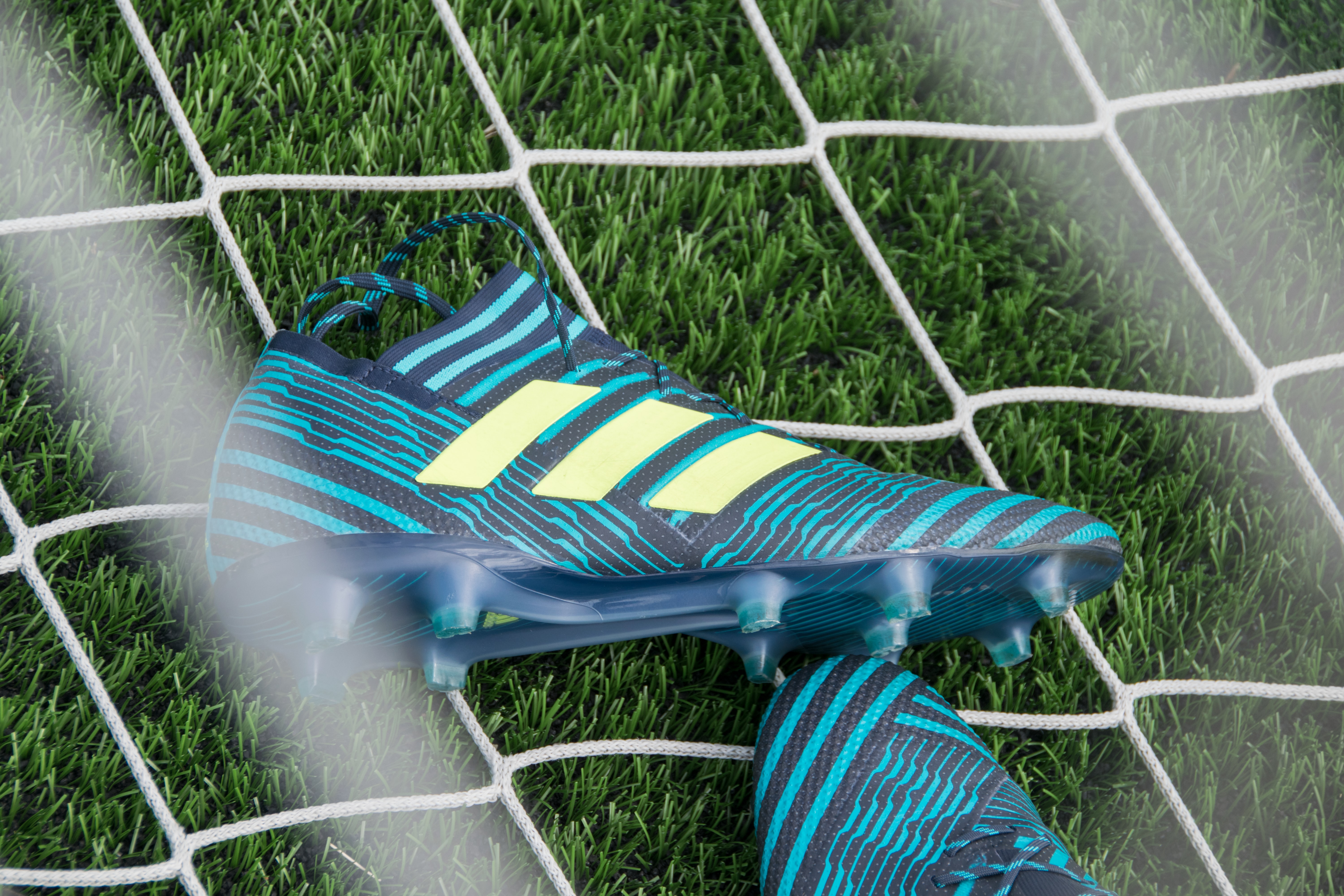
The different types of studs for soccer shoes have varying shapes that are designed for specific purposes. These types of studs can be found together in most outsoles, while there are also outsoles that only have one type of soccer studs. Check out below for details about these different types of soccer shoe studs. [3]

Triangular:
These triangular studs have a blade-like shape that provides ample grip on the ground. Triangular studs are often found at the forefoot and are used for pushing or moving forward or sideways.
Hexagonal:
Hexagonal studs are relatively larger than triangular studs and are primarily used for traction. Much like triangular studs, hexagonal studs are utilized for pushing off forward or sideways, and they are usually located on the sides of the forefoot.
Conical or Circular:
The conical or circular studs are the most common studs you will see on soccer shoe outsoles, as they are very versatile and can provide rotational movement while also having enough traction on different types of football fields.
Things to Consider When Buying Soccer Shoes
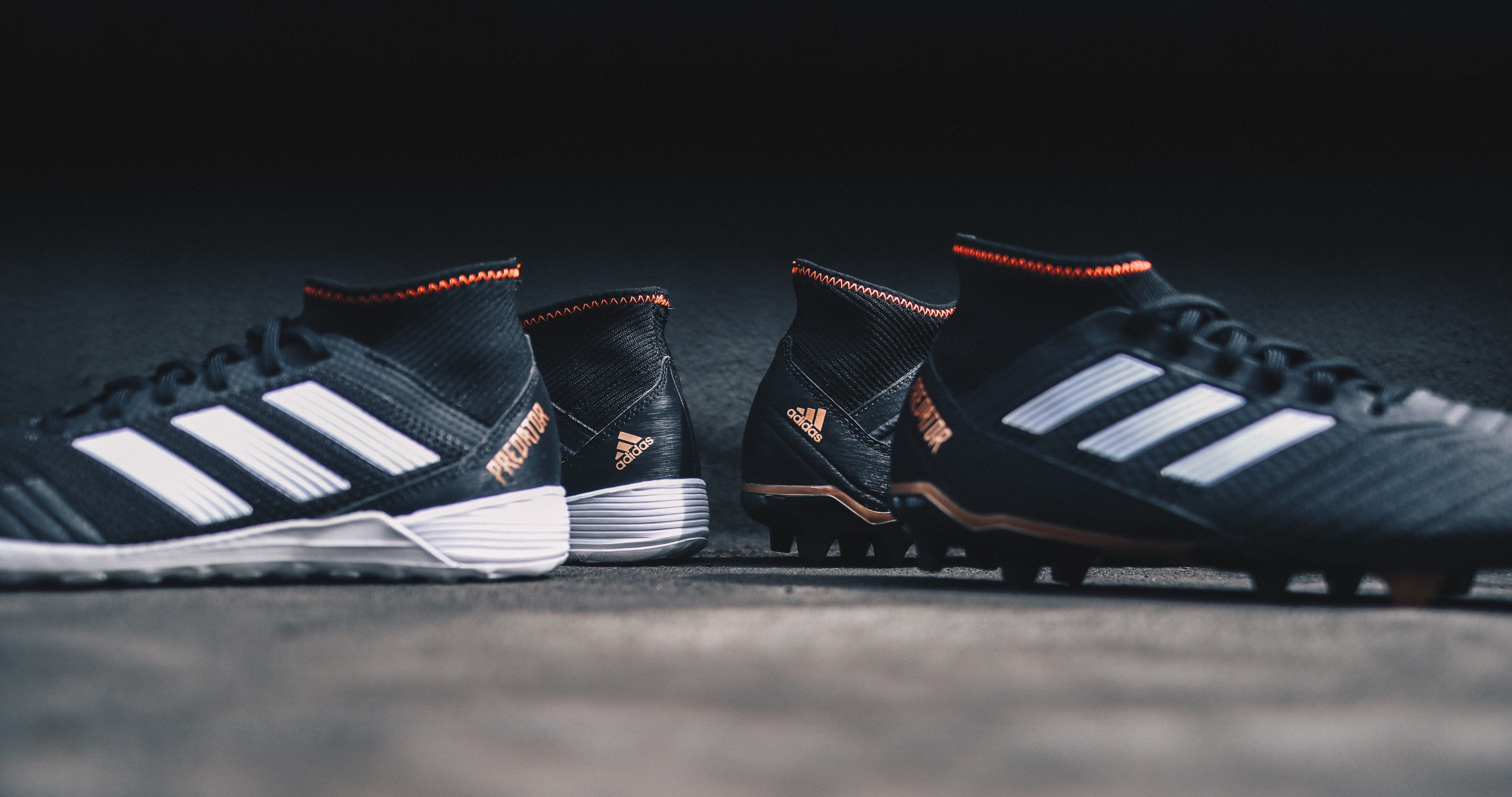
When you are ready to buy a pair of soccer shoes, there are some things that you need to consider to make sure that you are buying the most suitable or perfect pair for you. Here are some of those things to consider when buying soccer shoes.
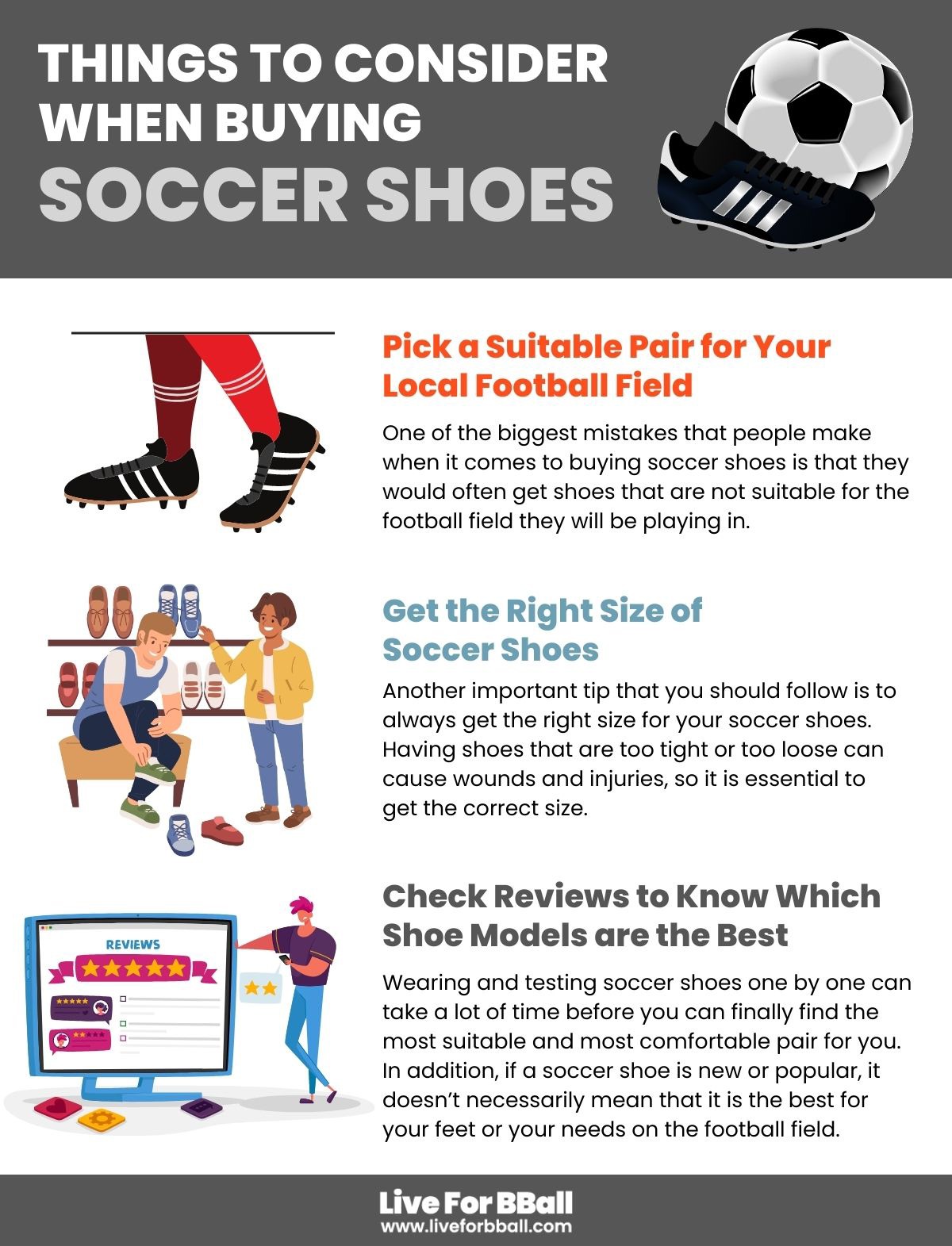
Pick a Suitable Pair for Your Local Football Field
One of the biggest mistakes that people make when it comes to buying soccer shoes is that they would often get shoes that are not suitable for the football field they will be playing in. For example, if the football field is not well-maintained and is often muddy, people would usually wear firm ground soccer shoes instead of soft ground soccer shoes that are much more suitable for the state of the field.
So, with the knowledge that you gained about different types of outsoles for soccer shoes, we hope that you will have a better idea of what type of shoes to buy for your local football field. You can own two pairs of soccer shoes for different football field surfaces so that you will have versatility for your gear.
Get the Right Size of Soccer Shoes

Another important tip that you should follow is to always get the right size for your soccer shoes. Having shoes that are too tight or too loose can cause wounds and injuries, so it is essential to get the correct size. As much as possible, you should buy soccer shoes from a physical store so that you can wear them and see which size suits your feet the best. However, if you cannot go to a physical sporting goods store, you can just measure your feet and base your size on your measurements when you are buying soccer shoes online. A slightly tighter fit is recommended for soccer shoes, with about 0.25 to 0.50 inches of gap between your longest toe and the front end of the shoe.
Check Reviews to Know Which Shoe Models are the Best
Wearing and testing soccer shoes one by one can take a lot of time before you can finally find the most suitable and most comfortable pair for you. In addition, if a soccer shoe is new or popular, it doesn’t necessarily mean that it is the best for your feet or your needs on the football field. So, checking out only the popular and newest soccer shoes may be a bad strategy when it comes to purchasing the best pair.
In order to have an easier and more convenient time finding the best shoes for your preferences or needs, we highly recommend that you consult reviews, which are abundant online. These reviews will provide you with essential information that will help you in deciding which shoe model is perfect for you. Check these reviews on soccer-focused websites, YouTube channels of soccer enthusiasts, and shoe review blogs.
We hope that this simple guide has helped you in knowing what to buy when it comes to soccer shoes. Follow the tips we have provided above so that the soccer shoes you will buy online or in sporting goods stores will have the perfect fit for your feet while also having great features that improve your handling, passing, and scoring of the football.
References
[1] Onkst, T. (2011, July 8). Types of Football Turf. SportsRec. Retrieved November 9, 2022, from https://www.sportsrec.com/403387-types-of-football-turf.html
[2] Spencer Moeller Blog. (2019, October 11). Soccer Cleats: Everything You Need to Know. Spencer Moeller. Retrieved November 9, 2022, from https://spencermoeller.com/blogs/news/soccer-cleats-everything-you-need-to-know
[3] Barr, J. (2017, April 17). Soleplate Breakdown: Field Surfaces & Stud Configurations. East Coast Soccer Shop. Retrieved November 9, 2022, from https://www.eastcoastsoccershop.com/blogs/news/soleplate-breakdown-surfaces-studs

